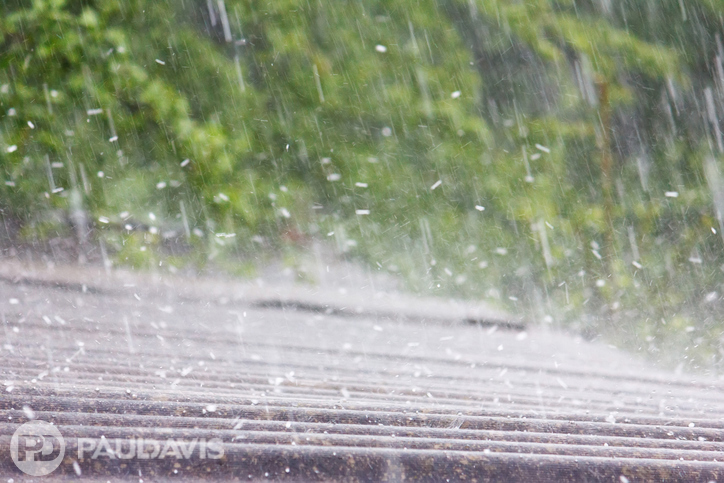
Winter was harsh across Canada, bringing deep snow, howling winds, plunging thermometers, ice buildup, freezing rain and rapid temperature fluctuations. As a gentler season arrives, Paul Davis urges commercial property owners to see how flat roofing systems weathered this particularly fearsome winter. Intact roofing is critical to handling heavy spring rains because, interestingly, flat roofs aren’t really flat: they feature very slight sloping that quickly channels rainfall off surfaces.
We followed Brady Chuckel, President of Paul Davis of Southeast Wisconsin, as he toured a flat roof and demonstrated how owners can identify possible damage.
“Look for debris like branches or other foreign matter,” he says. Remove debris if it’s safe to do so – hire specialists to assist if removal is challenging - and scan roofing materials below the affected areas to ensure they remain sound.
“Note standing water.” Sound flat roofs should drain evenly and quickly but heavy snow loads can compromise aging or improperly installed roofing systems. Ponding requires the attention of a skilled roofer and is a defect that must be addressed. Standing water degrades roofing surfaces, reduces expected lifetimes of roofing materials and is likely to leak into the structure if it’s not corrected.
“Visually inspect the entire roofing surface.” You should see smooth membranes and underlayment, flexible and intact seals, and tight flashing. Harsh winters, he continues, can expose unseen weaknesses in poorly installed roofing systems. Signs of possible damage include bubbling or lifting roofing materials; bumps in roofing materials (these may indicate the roof fasteners beneath are no longer tight); and loose, rusted, detached or missing flashing.
“Ensure that evespouts are clear, intact and tightly fastened.” Harsh winter storms can carry debris that may clog or damage evespouts, Chuckel adds. Additionally, icicles, ice dams and the freeze/thaw cycle can degrade these roofing components. If conditions are right, ice can become so heavy it shears or weakens evespout attachments.
“Inspect equipment attachment points.” If air handling units, lightning rods, antennae or other equipment are roof-mounted, ensure that these attachments remain tight and sealed against water infiltration.
“Finally, scan the structure’s interior for mould odors or water staining.” Never ignore a mould smell or mould staining in a building’s interior, Chuckel urges. Unless these are found in high-moisture areas such as indoor pools, they likely signal roofing leakage. Water staining – even small water spots – also flags roofing damage. “Water staining or mouldy smells require professional investigation,” Chuckel continues. “Water can travel long distances from the source before it becomes visible as staining.”
Chuckel recommends retaining a skilled roofing contractor to address suspected problems. “Commercial roofs are technical systems that require regular maintenance and vigilant attention to ensure they function correctly and remain durable,” he emphasizes.
Are you a commercial owner requiring assistance with water damage from a winter-weakened roof? Paul Davis is on the scene within four hours of a call for help.
